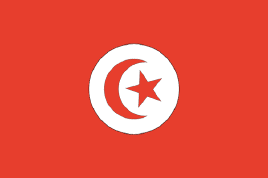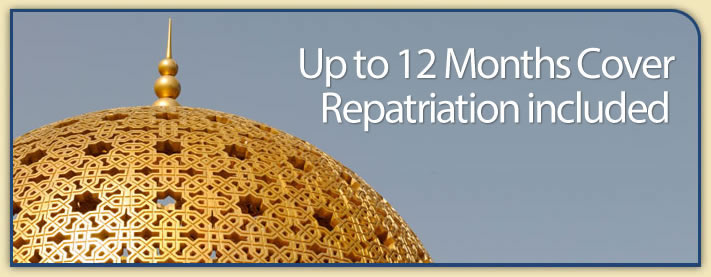Country Guide • Tunisia

Tunisia is located in North Africa. It is bound by Algeria to the west, Libya to the south east and the Mediterranean Sea to the north east and north.
| Official Name | Republic of Tunisia |
|---|---|
| Area | 164,150km² (63,379mile²) |
| Population | 9,924,742 |
| Continent | Africa |
| Population per mile² | 157 |
| Capital City | Tunis |
| Religions | Sunni Muslim 98%, Christian 1%, Jewish and other 1% |
| Language | Arabic (official and one of the languages of commerce), French (commerce) |
| Government | Republic: |
| Currency | Tunisian Dinar |
| GDP | $63 billion |
| GDP per Head | $6,500 |
| Natural Resources | Petroleum, phosphates, iron ore, lead, zinc, salt |
| Land Use | Arable Land 18.67% |
| Agriculture | Olives, olive oil, grain, dairy products, tomatoes, citrus fruit, beef, sugar beets, dates, almonds |
| Industry | Petroleum, mining (particularly phosphate and iron ore), tourism, textiles, footwear, agribusiness, beverages |
| Tourism | Whatever the season, your first glimpse of Tunisia will be one of golden beaches and a deep blue sea. With over 1200 kilometers of coast this sunny Mediterranean land is a paradise for the traveller. Well known seaside resort areas - Sousse, Monastir, Hammamet and Nabeul, Djerba and Tabarka offer their visitors the finest sand beaches and crystalline water along with a dizzying choice of waterfront hotels featuring sun and sea sports as windsurfing and sailing, underwater sightseeing, fishing and short boat rides. Tunisia, the northernmost country of Africa has for over 3000 years witnessed the passage of Phoenicians, Romans, Vandals, Byzantines, Turks, Spanish and French. This heritage, Tunisia's greatest wealth has been held in trust and preserved in hundreds of sites and museums from the small Punic museum in Utica to the vast collections of the prestigious National Museum of Bardo. Tunisea also edges the Sahara desert where you can see the past locations for films like Star Wars |
| Natural Hazards | None |
| Health Risks | Malaria, yellow fever |
| Climate | Tunisia has a Mediterranean climate characterised by warm dry summers and wet winters. The inland regions experience hotter summers and more rainfall while there are two distinct seasons, a cool wet season from October - May and a warm dry season from May - September. Average annual rainfall varies from 17 inches in the north to more than 35 inches in the Tell Atlas Mountains while the southern desert region receives less than 10 inches annually. Average temperature ranges in Tunis are from 6 to 14°C in January to 21 to 33°C in August |
| Time | GMT/UTC+1 hour |
| National Days | March 20 Independence Day,March 21 Youth Day,April 9 Martyrs’ Day, May 1 Labour Day, May 14 Mouled, July 25 Republic Day, August 13 Women’s Day, November 7 New Era Day |
| Visas | British passport holders do not require visas for a stay of three months or less. On arrival, security checks are sometimes run on British passport holders who are not UK-born. This can take a few hours and such visitors are advised to be patient until clearance is given. There is unlikely to be a similar checking process or delay on departure |
| British Embassy | Embassy Details |
Information Only
The content above is for information purposes only and we have tried to ensure that the information is as accurate as possible. We cannot accept any responsibility for any inconvenience, loss or injury as a result of the information above. You should always check and verify any critical information like visas, health and safety and customs with the relevant authorities before you travel since information can change at any time.



